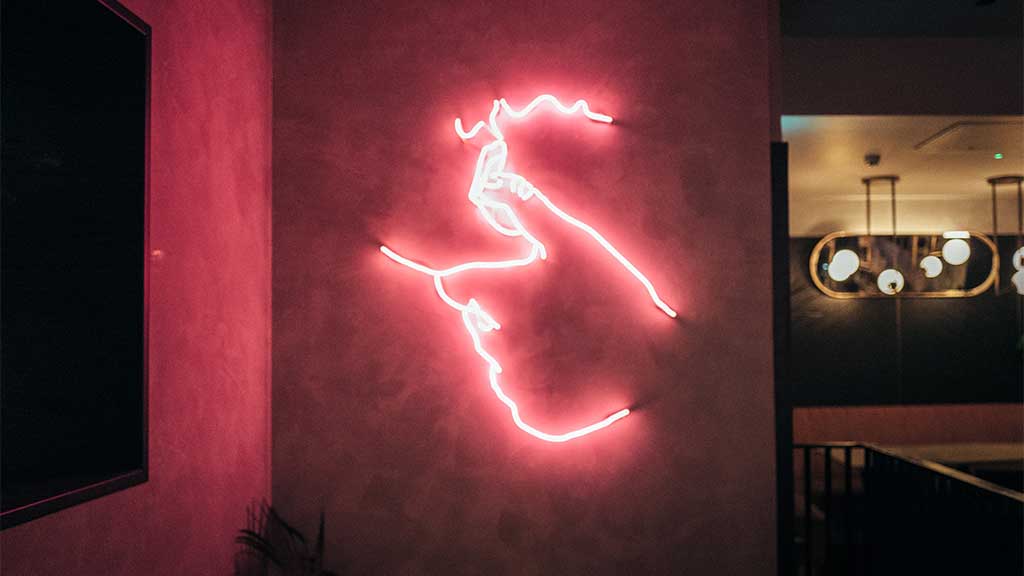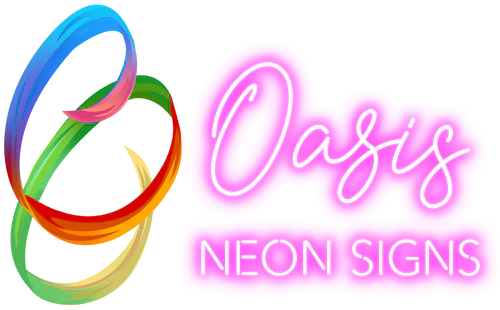
Do Neon Signs Use a Lot of Electricity?
Share
Searching for “Do neon signs use a lot of electricity?” You’ve reached the right place as we’ll delve into this question in great detail in this blog.
Adding neon signs is one of the most effective ways to spruce up the aesthetics of your home, office, or shop. But while neon signs have gained vast popularity in recent years, there’s a lot people want to know before making a purchase.
One of the most common queries for a lot of people wanting to purchase a neon sign is regarding their power consumption. Do neon signs consume a lot of electricity? How do their power requirements compare to LEDs and traditional fluorescent lights? Let’s find answers to these questions-
How Do Neon Signs Work?
Before understanding the power requirements of neon signs, let’s first have a quick look at how they work. So, neon signs are electric discharge lamps that combine an aesthetic combination of art and science. These signs are made from glass tubes with neon or other noble gases in them.
When a high-voltage electrical current is passed through the gas, the atoms ionize and start emitting light photons. The color of the light depends on the gas used in the glass tube. For instance, neon gas emits the classic fiery red while a gas like argon is used in green and blue neon.
A lot of people also want to know can neon lights conduct electricity. No, neon lights themselves do not conduct electricity like a typical conductor such as a metal wire. As discussed above, they need electricity to function and produce light by energizing the stored gases.
Do Neon Signs Use a Lot of Electricity?
This question is critical for buyers, especially for businesses, as they’ll probably use the signage for several hours every day.
The energy usage abundantly depends on the design and size of the neon sign. The bigger the sign, the more power it’ll need for illumination. Here’s how you can manually calculate how much power your neon sign will consume-

- Convert the wattage of the neon light transformer and convert it into kilowatts.
- Multiply the kilowatts with the total number of hours you’ll keep the sign on per day
- Multiply the figure by the per kWh electricity cost in your area
For instance, if we consider a 100 watts neon sign that will be used for 12 hours per day and the energy cost is 30p (pence) per kWh, the calculation will be as follows-
100 watts = 0.1kw
0.1kw x 12 hours a day= 1.2kWh
1.2kWh x 30p (cost per kWh) = £3.6 per day
£3.6 x 365 days (a year) = £1,314 a year
You can also look for an LED vs. neon power consumption calculator to better understand the financial impact of these lighting options.
What are the Factors That Impact the Electricity Usage of Neon Lights?
The electricity consumption of neon signs is influenced by various factors, like-
Size and Complexity
The size and complexity of a neon sign directly impact its power consumption. Larger signs that have more complex designs need more electricity as they generally have more neon tubes and higher wattage requirements. So, when selecting a neon sign, consider the size and complexity of the design. Smaller signs with simpler designs are generally more energy-efficient.
Operating Hours
Needless to say, neon signs that operate 24 hours every day will consume a lot more power compared to ones only used for a few hours a day. For commercial applications where constant visibility is required, such as storefront signage or advertising displays, the continuous operation adds up to the total cost of using neon signs.
Maintenance
An often overlooked aspect of using neon signs is their maintenance. Well-maintained signs are more energy-efficient as dirt, dust, or damage to the neon tubes can interfere with the lighting process. A clean and properly maintained neon sign will operate more efficiently and require less electricity to achieve the required level of brightness.
How Does the Power Consumption of Neon Lights Compare with Other Lighting Options?

Neon signs and their vibrant colors add a unique aesthetic touch to any surrounding. Whether you use them at home or as a signage in front of your business premises, they are sure to attract a lot of attention. But how do they compare with other lighting options? Take a look-
1. Neon Signs vs. Incandescent Bulbs
Traditional incandescent bulbs are known for their warm glow; however, they’re not energy-efficient. While neon lights function at higher voltages, they’re often more efficient compared to incandescent bulbs with regard to their light output per watt. In other words, for a given level of brightness, neon lights consume less power compared to incandescent bulbs.
2. Neon Signs vs. Fluorescent Tubes
Compared to incandescent bulbs, fluorescent lighting is more energy-efficient. This has made them a go-to choice for a wide range of commercial and residential applications. However, when we compare Fluorescent vs Neon; neon signs offer significant advantages in terms of design flexibility and color options. Neon signs can be custom-made into intricate shapes and designs that fluorescent tubes cannot replicate.
3. Neon Lights vs. LED Tubes
Do LED lights take a lot of electricity? No, LED (Light Emitting Diode) lights are known to be highly energy-efficient. They consume less power, deliver equivalent levels of brightness, and last long. However, neon signs still offer several valuable benefits like-
- Color Quality - Neon signs produce rich and vibrant colors that are difficult to achieve with LEDs. Their luminous glow adds a unique appeal to any setting. This is also the reason why most businesses use neon signage.
- Customization - Neon lights can be custom-made into almost any shape or design, making them ideal for artistic and branding purposes. At Oasis Neon Signs, we allow our customers to upload their designs and even create their own neon designs from scratch with our online neon sign maker.
- Durability - While LEDs have a longer lifespan, neon lights are robust and can withstand harsh environmental conditions better than some LED options.
How About Neon Signs and LED Strips?

As LED is a more energy-efficient technology, the belief that LED strip lights use a lot of electricity is wrong, especially when we are comparing it to neon signs. However, the dramatic appeal of neon gives it an edge over any other lighting option.
Also, there are now LED-based neon lighting options that are more energy-efficient compared to traditional neon. While the upfront cost of these new types of neon lights is higher, they will save you money in the long run while still allowing you to get that artistic look for your home or business. However, it is worth noting that LED neon lights are generally not as bright as traditional neon lights.
What Should You Choose Between Neon Signs and LED Lights?
Still confused about whether you should choose a neon sign or LED lighting? Here are some other factors you should look into before making the decision-
1. Lifespan and Durability
Neon lights are highly durable and can withstand a variety of environmental conditions, making them suitable for indoor and outdoor applications. However, the lifespan of neon signs can vary based on usage and maintenance. On average, neon tubes can last for 8 to 15 years before needing replacement.
LED lights are also known for their long lifespan, often exceeding several thousand hours of continuous use. Moreover, they are also resistant to shock, vibration, and temperature fluctuations.
2. Visual Impact and Color Options
Neon signs offer rich and vibrant colors that are difficult to replicate with other lighting technologies. The characteristic glow of neon tubes creates a unique visual impact that adds personality and flair to any setting.
While the assumption that LED lights use a lot of power is wrong, it is true that their visual impact is not as attractive as neon lights. While there are now LED lights that are available in several colors and even ones that offer dynamic lighting effects, they are not up to mark when compared to neon.
3. Application

Neon signs are ideal for applications where vibrant colors and retro aesthetics are desired. Decorative signage, architectural accents, and art installations are some of the most common uses of neon lights.
LED lights are versatile and suitable for various applications, including task lighting, accent lighting, commercial signage, and architectural lighting.
Neon Light vs. LED Light Comparison
Here is a table highlighting the biggest differences between neon and LED lights-
|
|
Neon Sign |
LED Light |
|
Power Consumption |
Consumes more power per foot of tubing |
Consume less power per foot of strip |
|
Visual Impact |
Distinctive and eye-catchy glow |
Versatile but not as unique as neon |
|
Durability |
Highly durable |
More resistant to shock and vibration |
|
Energy Efficiency |
Less energy efficient |
More energy efficient |
|
Lifespan |
Average lifespan of 8-15 years |
50,000 hours and more |
|
Cost |
Lower upfront cost |
Higher upfront cost |
Elevate Your Space with Neon Signs
Now that you know about do neon signs use a lot of electricity and how they compare with other popular lighting options, you have all the information you need to make a selection.
While neon signs are not the most energy-efficient, they sure are the most attractive. The vivid colors and nostalgic charm of these signs make them ideal for a wide range of commercial and residential applications.
Visit Oasis Neon Signs to browse through one of the widest ranges of neon signs and upgrade your space in no time. You can also upload your custom designs or create them from scratch with our powerful neon sign builder to ensure your space looks as unique as you are.

